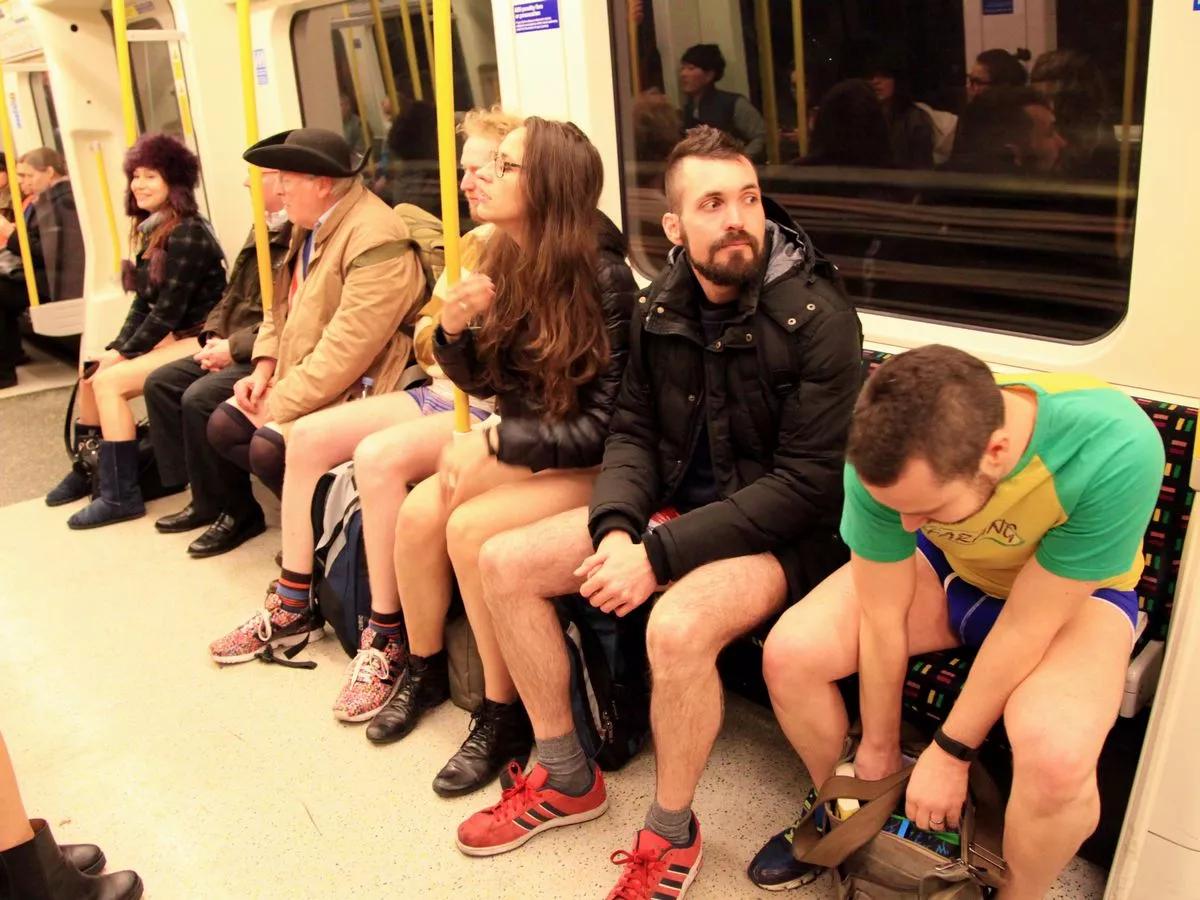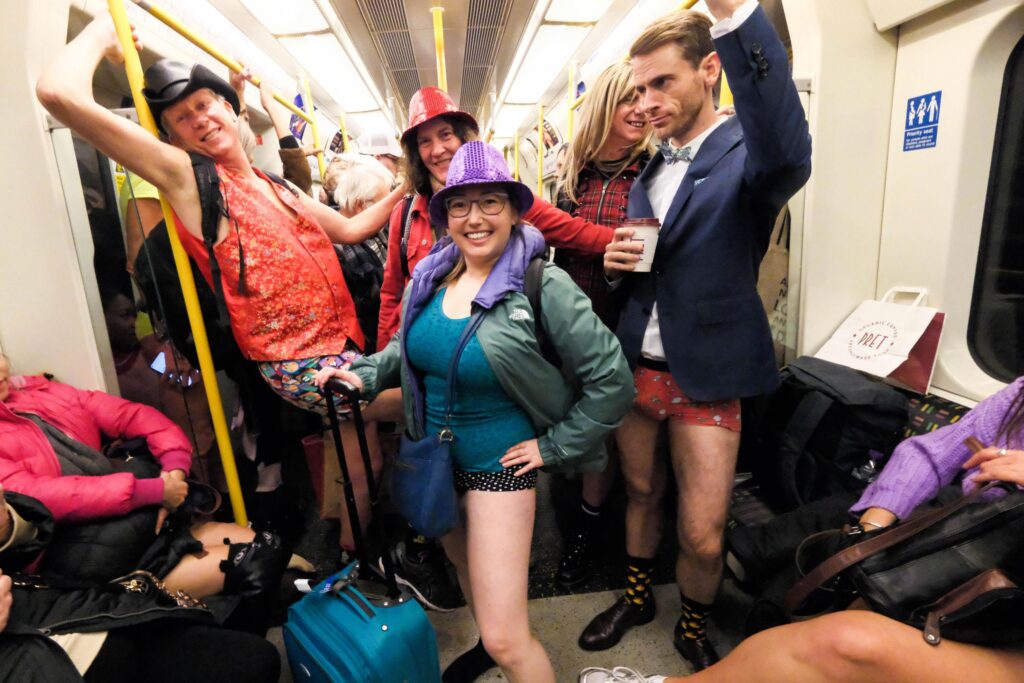On a crisp January morning, London’s underground transforms from a mundane commuter corridor into a theater of absurdity. The No Trousers Tube Ride, an annual global phenomenon that turns public transit into a surreal performance art piece, returns to shock, amuse, and perplex unsuspecting passengers. Imagine stepping onto a packed Northern Line carriage, surrounded by seemingly ordinary commuters—except they’ve collectively abandoned the lower half of their wardrobe, sporting nothing but underwear and an air of nonchalant determination. Every January, when most Londoners are bundled up in layers of thermal clothing and puffy jackets, a peculiar tradition emerges from the underground tunnels. Passengers aboard the London Underground shed their trousers, creating a surreal spectacle that transforms mundane commuting into performance art.
The No Trousers Tube Ride, an international phenomenon that began in New York in 2002, has become an annual ritual in the British capital. Participants strategically board subway carriages wearing coats, jackets, and – conspicuously – only underwear below the waist. Their mission? To confuse, amuse, and challenge social norms with calculated absurdity.
Organized through secret online channels and social media groups, the event attracts hundreds of participants who treat underwear like perfectly acceptable public attire. From boxer shorts to briefs, polka dots to plain colors, the diversity of bottom wear becomes a statement of collective rebellion against conventional transportation etiquette.
Seasoned participants have developed intricate strategies. Some maintain poker-faced seriousness, reading newspapers or scrolling through phones as if half-naked subway travel were completely normal. Others exchange knowing glances, suppressing giggles at the bewildered expressions of fully-clothed passengers.
Transport for London maintains an surprisingly tolerant stance. While technically the event could be considered a public order offense, authorities typically observe with bemused detachment. Police rarely intervene, recognizing the event’s harmless, satirical nature.
Psychological studies suggest such collective acts of mild transgression serve important social functions. They challenge unspoken rules, create shared experiences, and provide cathartic relief from societal constraints. For participants, it’s less about exhibitionism and more about communal playfulness.
International cities from Boston to Berlin have embraced similar events, transforming the concept into a global phenomenon. Each location adds its unique cultural flavor, reflecting local attitudes towards public behavior and spontaneity.
Smartphone cameras inevitably capture the moment, transforming individual acts of whimsy into viral content. Social media amplifies the event’s reach, attracting more participants and curious onlookers each subsequent year.
As winter’s chill grips London, this pantless parade reminds citizens that humor and human connection can emerge in the most unexpected places. What begins as a quirky subway ride becomes a celebration of collective imagination, challenging commuters to see beyond the ordinary and embrace the extraordinary.
When the last participant exits the train, the Underground returns to its usual rhythm – momentarily transformed, then quickly forgotten, until next year’s pantless rebellion.

